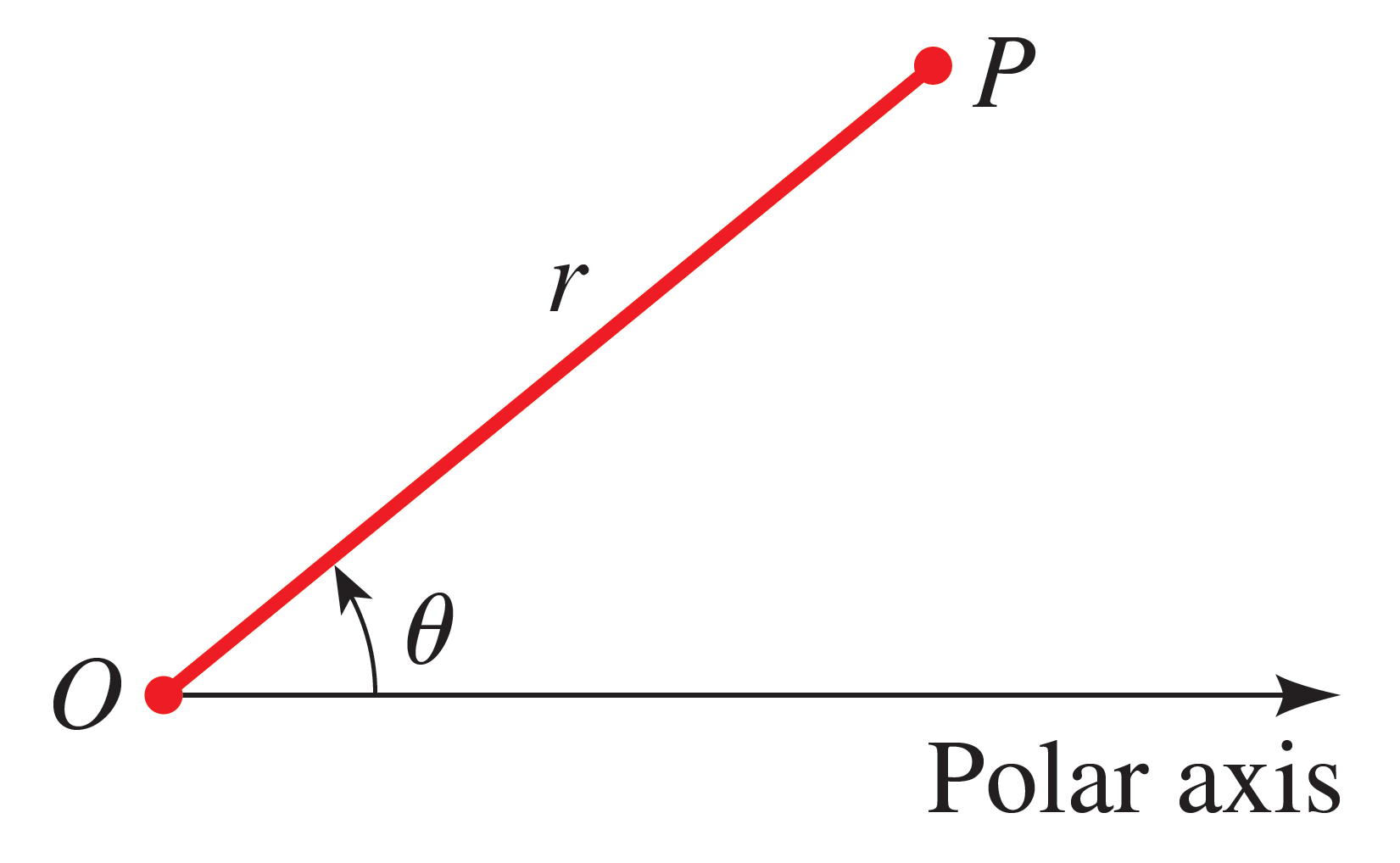8.1: Polar Coordinates
Motivation
Our coordinate system (called rectangular coordinates) involves $x$ (left-right movement) and $y$ (up-down movement).
Instead of $x$ and $y$, we can use distances and directions: start from the origin, and walk in the direction of the point.
Here's an animation comparing the two coordinate systems for the point $(2, 1)$.
Let's define the $r$ and $\theta$. Consider the following point $P$ in the coordinate plane:

Point $O$ is usually anchored at the origin. The polar axis is then aligned along the positive $x$-axis.
Then:
- $r$ is the shortest distance from origin $O$ to $P$ (a straight line)
- $\theta$ is the angle between the polar axis and line segment $\overline{OP}$.
We already know if $\theta$ is positive, rotate counterclockwise. If $\theta$ is negative, rotate clockwise. For $r$:
- If $r$ is positive, then walk in the direction of $\theta$.
- If $r$ is negative, then walk in the opposite direction of $\theta$.
Finally, the new coordinate system is an ordered pair $(r, \theta)$.
- Graph it.
- Find two other polar coordinate representations with $r < 0$.
Relationship Between Polar and Rectangular Coordinates
How can we convert between $(r, \theta)$ and $(x, y)$? Here's a point with both coordinate systems labeled:

Note that $\cos \theta = \dfrac{x}{r}$.
Solving for $x$ gets $x = r\cos \theta$. The equation says plug in $r$ and $\theta$ to get $x$ out.
So we have:
Careful: When converting rectangular to polar, $r^2 = x^2 + y^2$ will give you two $r$ values and tangent will respond with two different angles $\theta$.
Graph the point to determine which pairing of $(r, \theta)$ is appropriate.
Polar Equations
A polar equation is an equation involving only $r$ and $\theta$'s. For example \[r^3 = r \qquad \qquad r = \theta \qquad \qquad r = 1 - 2\sin \theta\] are all polar equations.